Recycled plastics Polymers battery recycling BRICS Chemical Recycling supply chains 17-12-2021 - Arhive
Recycled plastics Polymers battery recycling BRICS Chemical Recycling supply chains
-EREMA enters a new dimension with large-scale recycling plants
As the demand for recycled plastics grows, so does the size of the machines. This applies to the processing of polyolefins as well as to PET recycling. With its unique dimensions and production capacity, this new size of plant features a screw diameter of 280 mm, implemented for the first time in a VACUREMA® Basic 2628 T large-scale project for producing rPET pellets. EREMA has just shipped the plant to a customer in Brazil.
From the Left: Patrick Rachinger, Product Group Manager, and Sophie Pachner, R&D Engineer. (Photo credit : EREMA GmbH)
Up to 40,000 tonnes per year of rPET meeting the highest quality standards can now be produced. “For this purpose, we installed a screw with a length of ten meters, a diameter of 280 millimetres and a weight of 3.5 tonnes, which is the largest ever used in one of our recycling machines,” explains Managing Director Michael Heitzinger. The screw was manufactured by 3S, a subsidiary of EREMA GmbH. No less impressive is the reactor of this recycling system, which, with a height of around 10 metres, is also unique and almost reaches the roof of the new production hall. 500 tonnes of input material were recycled during the test phase, which was subject to strict quality control. “The entire project was a great team effort,” Heitzinger said, thanking everyone involved.
EREMA is your expert partner for large-scale projects
Just four years ago, the largest extrusion line supplied by EREMA was designed for a throughput of 15,000 tonnes per year. This size of plant was ordered by customers once or twice a year. In the meantime, machines like this leave the production site in Ansfelden every month. As early as 2020, EREMA proved to be a pioneer and reliable partner for implementing unique large-scale projects.
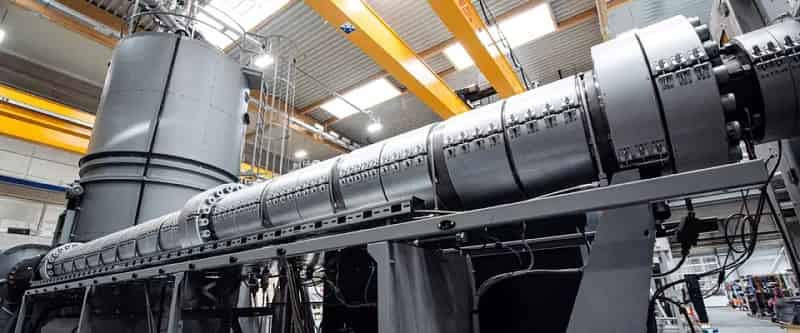
-PE,PP Polymers :Pricing Power Now in Hands of Processors
Further price erosion is expected this month, following three quarters of producer increases and record high prices.
A very heavy flow of offers, predominately for high-density (HD) polyethylene (PE), low-density (LD) PE, and homo-polymer polypropylene (PP) grades did not translate into high sales volume last week, reports the PlasticsExchange in its Market Update. Transactions were heavily slanted toward PE, which saw prices flat to $0.04/lb lower, depending on grade. Prime PP prices, which had already been battered, held steady against limited action. Off-grade railcars were again deeply discounted.
An overall negative tone persists throughout the resin sector, though the downward global economic trend that had been prevalent subsided some as optimism emerged that the Omicron variant would not be as damaging as originally expected, thus easing consumer demand concerns.
Crude oil and financial markets also rebounded from their dismal performance at the start of December, following a government-reported increase in US inflation, which showed consumer prices with their largest year-on-year increase since 1982.
Although the down trend continues for resin export prices out of Houston, further discounting is still needed to open the high-volume incremental export arbitrage, as US resin prices have yet to become competitive outside of North and South America. However, logistics constraints stemming from a lack of equipment and personnel complicated exporters’ efforts to move the glut of material from full warehouses in Houston and California. This also comes as resellers are trying to move higher cost lots and limit their losses. For now, at least, pricing power is in the hands of processors with further room for price decay in December after three quarters of producer increases and record high prices. With the Q4 purge picking up steam, the PlasticsExchange expects producers to do their best to turn the market higher in Q1 of 2022. Recycled plastics Polymers battery recycling BRICS Chemical Recycling supply chains
PE resin trading ticks up
PE trading improved the week of Dec. 6, as buying activity increased compared with the window shopping, tire kicking, and light volumes experienced the previous couple of weeks. Film grades were the biggest movers, with linear-low-density (LLD) PE seeing the most volume, followed by LDPE, as both dropped a penny along with high-molecular-weight Film, reflecting more widespread availability. HDPE Injection and Blow Mold came off another $0.03 to $0.04/lb, as their once huge premiums continued to deflate, but those grades still did not garner serious demand. LDPE high flow for injection, which is still among the hardest commodity resins to source, was the only PE grade not to drift lower, instead holding steady and maintaining levels still in the $0.90/lb range. Prompt premiums also remain in place for those limited uncommitted quantities of material available from resellers. However, railcars for most PE grades remain available with three-week lead times, and deeply discounted offers are on the table for those willing to commit. Unless market sentiment shifts and direction changes, the continued and gradual price erosion is setting up for another decrease for December PE contracts, perhaps a nickel or more, following the collective $0.10/lb drop for October and November contracts, according to the PlasticsExchange. PE contracts are still up a net $0.31 to 0.33/lb for 2021 thus far. Another monthly decline would still keep contract prices well above where they began the year. Recycled plastics Polymers battery recycling BRICS Chemical Recycling supply chains
PP resin supply exceeds demand
PP trading had another lackluster week as supply continued to outweigh demand, and buyers remained patient with anticipation of further price erosion ahead. After spot PP chunked off a huge $0.07/lb to start the final month of 2021, domestic co- and homo-polymer PP held steady this past week, having already fallen well in excess of PP contracts. Despite the lack of movement, homo- and co-polymer PP remained relatively expensive, with prime pricing still hanging in the vicinity of $1/lb. Off-grade can be found considerably cheaper, however.
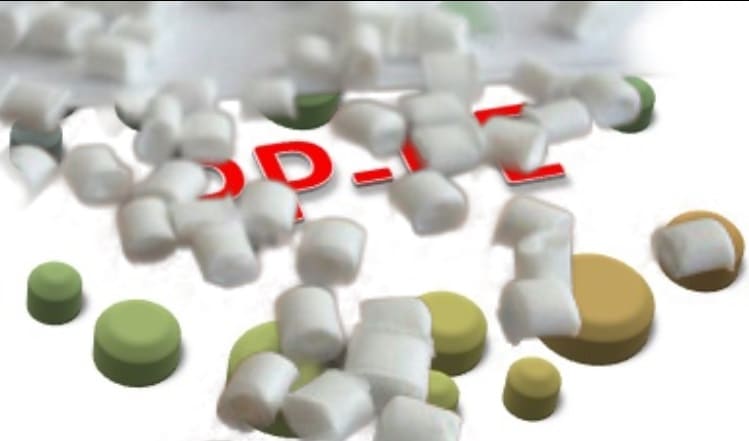
-Li-Cycle to proceed with first commercial hub for lithium-ion battery recycling
Rochester, New York, facility to process battery material equivalent to 225,000 ELVs yearly
Inside Li-Cycle’s Rochester, New York spoke facility which takes in end-of-life batteries and battery manufacturing scrap to produce “black mass”, containing nickel, cobalt and lithium.
Li-Cycle will proceed with the construction of its first commercial Hub facility, which is being developed within the Eastman Business Park near Rochester, New York. The Hub will be fully integrated with Li-Cycle’s existing network of Spoke facilities across North America, which take in end-of-life batteries and battery manufacturing scrap to produce “black mass”, an intermediate product containing valuable metals such as nickel, cobalt and lithium.
The new Hub will transform that black mass into critical battery grade materials to be returned back to the lithium-ion battery supply chain. Li-Cycle’s Spoke facilities will be the primary suppliers of feedstock for the new commerical Hub in New York.
In view of rapidly growing demand for lithium-ion battery recycling, Li-Cycle says it will increase the input processing capacity of the Hub annually by over 40 percent, from 25,000 tonnes to 35,000 tonnes of “black mass”. With its increased capacity, the Hub will be able to process battery material that is equivalent to approximately 225,000 electric vehicles per year.
Li-Cycle estimates that their new Hub will require a total capital investment of approximately $485 million, which can be funded from existing balance sheet cash, and expects to explore various opportunities to optimize its capital structure, for example, with potential credit from government-related institutions.
According to Li-Cycle, the total addressable market for lithium-ion battery recycling in North America continues to accelerate as battery manufacturers are investing to build the supply chain to support electrification.
Megafactory investments are now projected to surpass 500 GWh capacity by 2025, approximately 11 times the current capacity. Based on independent industry forecasts and Li-Cycle’s internal analysis, Li-Cycle estimates that there could be nearly 250,000 tonnes of lithium-ion batteries available for recycling from manufacturing scrap in North America alone by 2025.
Recycled plastics Polymers battery recycling BRICS Chemical Recycling supply chains
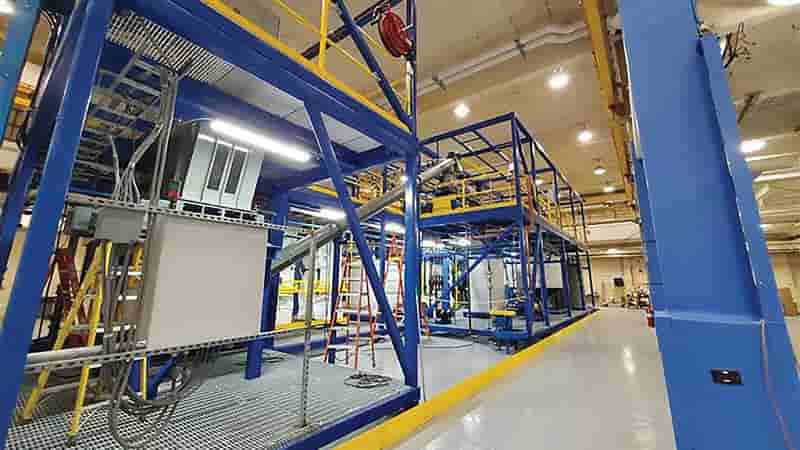
-COVID crisis results in significant economic losses for BRICS
The COVID-19 pandemic-induced crisis has led to significant economic losses and made the social fabric of the BRICS countries fragile by amplifying unemployment, poverty, gender disparity and migration risks, according to the BRICS Economic Bulletin released recently. The BRICS grouping consists of Brazil, Russia, India, China and South Africa. Recycled plastics Polymers battery recycling BRICS Chemical Recycling supply chains
The Reserve Bank of India released the bulletin prepared by the BRICS Contingent Reserve Arrangement (CRA) Research Group with members from BRICS central banks. India is the current chair of the BRICS. The CRA Research Group was set up to enhance research, economic analysis and surveillance capacity of the BRICS.
The crisis has indiscriminately affected all countries, adding that the BRICS were no exception as they have also been seriously hit by the pandemic and are trying to recover from it, the bulletin said. However, there is a significant heterogeneity among the BRICS in the duration and intensity of the pandemic.
“While China could largely contain the spread of the debilitating infection, other BRICS countries have witnessed multiple waves of infection,” it said.
The COVID crisis has led to significant economic losses and made the social fabric of the BRICS fragile by amplifying unemployment, poverty, gender disparity and migration risks, the bulletin noted.
As per the bulletin, there is convincing evidence of a recovery of the BRICS from the deep, pandemic-induced contraction in 2020. However, the recovery shows significant divergence amongst the BRICS members.
“China has been able to control the infections effectively which has aided its quick recovery. While the pace of economic growth is gradually picking up in India and Brazil, Russia and South Africa are yet to return to their pre-pandemic levels of economic activity,” it said.
Further, the bulletin said that since the threat of COVID remains unabated in the BRICS, it is difficult to estimate the robustness of this recovery.
“Going forward, the pace and efficacy of vaccination is going to be the most important determinant of economic recovery,” it said.
According to the bulletin, if the growth momentum in the BRICS countries, especially in China, slows down, global recovery could also see further headwinds to its growth momentum.
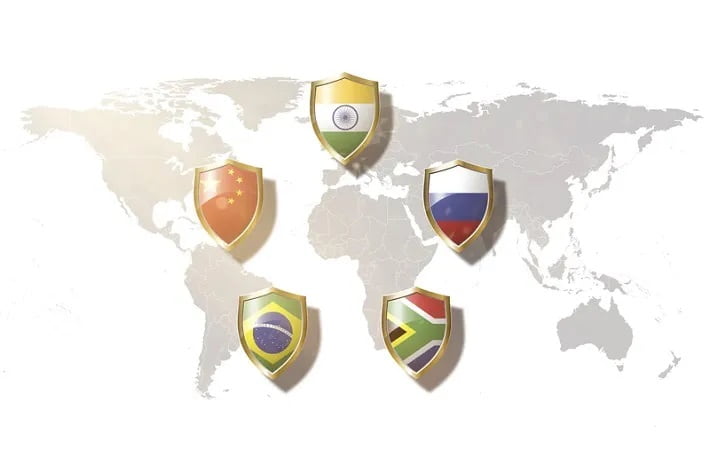
-No Relief for Supply-Chain Headaches in the Near Future
There is some optimism that material production will increase, but converters and equipment makers are struggling to deliver product because of a shortage of workers. Recycled plastics Polymers battery recycling BRICS Chemical Recycling supply chains
The pandemic-instigated shocks to global supply chains that have given material and machine suppliers so many headaches are unlikely to resolve in the near future, according to industry experts.
While there is optimism that material production will increase, converters and equipment makers are struggling to deliver product thanks to dire worker shortages.
“I don’t think things will actually be dramatically different from 2021,” cautioned Perc Pineda, PhD, Chief Economist for the Plastics Industry Association (PLASTICS). “I was expecting that, after the second half of this year, we would see some easing of supply chain bottlenecks — but that hasn’t really happened.”
On the equipment side, he noted, delivery times continue to be much longer than they were prior to COVID. While new orders remain strong, shipments are lagging, indicating that manufacturers are experiencing production delays amid persistent workforce shortages.
With the labor participation rate stuck at around 62% since June 2020, Pineda is not even confident that an increase in that rate would give the manufacturing sector and ancillary services a boost.
“We still have an 80,000 truck-driver shortage,” he noted. “The labor force issues in the manufacturing sector started before the pandemic. We estimated in 2019 that there would be about 145,000 potential job openings in the plastic industry in the next 10 years. COVID probably added another 5,700 to that. So, on the labor side, we are struggling.”
Furthermore, with the main customer of the plastics industry being the manufacturing sector, he said, supply troubles in those end markets “will have a ripple effect on the plastics industry.” A prime example is the automotive industry, in which assembly has been hampered so significantly by the worldwide shortage of semiconductor chips. That shortage, though expected by some to ease by the end of next year Pineda said, likely will linger — with 10 to 20 weeks of lead time for chips on average Recycled plastics Polymers battery recycling BRICS Chemical Recycling supply chains

-Agilyx Details Chemical Recycling’s Role in Plastic Circularity
Advanced recycling innovator discusses “divert and convert”, LCA, challenges, and why the affiliation with Cyclyx is a match made in circular heaven.
Chemical or advanced recycling has created a growing buzz over the past two years as accelerating research yields a torrent of developments.
It’s no wonder, the technology is a kind of modern, sustainable plastics alchemy that can turn a variety of post-use plastic into virgin-quality resins for high-grade applications including food packaging.
One of the more active newsmakers in this expanding market is Agilyx, which with affiliate Cyclyxbridges the gap between waste collector and recycler to create a truly circular pathway for plastics.
For example, in July Agilyx announced a significant milestonein applying the technology to create food-contact packaging sold at retail in Europe. A recycled styrene monomer in yoghurt cups were made with 50% recycled polystyrene, demonstrating that depolymerization technology can provide the building blocks needed to create new, virgin-quality plastics, without the need for harvesting new fossil fuels. Recycled plastics Polymers battery recycling BRICS Chemical Recycling supply chains
If landfill diversion is a vital part of a circular economy, then chemical recycling looks to be a viable part of the solution.
We learn more about the technology in an interview with Agilyx CEO Tim Stedman.
What’s chemical recycling’s role in plastic circularity?
Stedman: Our focus at Agilyx is to “divert and convert.” Plastic is too valuable to waste, so wherever possible, we should collect and divert this plastic from going to landfill or incinerators. That’s the reason we created Cyclyx, an innovative feedstock management company that uses a partner-driven model to drive up global plastic recycling rates. Cyclyx will increase the diversion of post-use plastic away from landfill and toward recycling, adding scale and efficiency to today’s highly fragmented system of plastics recycling.
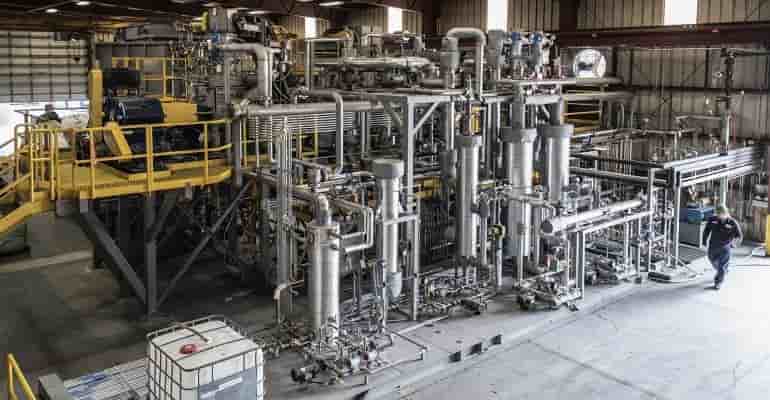
-Curbside HDPE prices continue steep declines
Plastics Recycling MarketsHDPE bale prices have continued to collapse from their record highs, with natural HDPE down 26% and color HDPE down 33% this month.
The national average price of post-consumer natural high-density polyethylene (HDPE) from curbside collection programs is now averaging 56.44 cents per pound, down 26% from the 76.31 cents reported last month. Natural HDPE prices have been falling since they hit a record high in September. The price was 63.00 cents this time last year and 23.00 cents five years ago.
Following natural, the national average price of color HDPE is down by one-third this month. The plastic grade is now trading at 26.63 cents per pound, compared with 39.81 cents last month. Color HDPE hit a record high price of 58.13 cents in September. This grade averaged 17.06 cents one year ago.
Another curbside polyolefin grade, polypropylene (PP), has also fallen steeply. PP is now at 18.94 cents per pound, compared with 23.25 cents last month, or down about 19%. PP was at 7.00 cents one year ago.
Other plastic grades have shown either smaller drops or are flat this month.
PET beverage bottles and jars dropped by 5%. The price is now averaging 18.28 cents per pound, compared with 19.34 cents per pound this time last month. Some regions are still trading as high as 23.00 cents per pound, however. PET was trading at 6.55 cents one year ago and 10.35 cents five years ago.
The national average price of Grade A film remains steady. It is now at 20.50 cents per pound, compared to 20.75 cents per pound last month and 9.44 cents one year ago. Recycled plastics Polymers battery recycling BRICS Chemical Recycling supply chains
Grade B film is now at 7.25 cents per pound, compared to 7.38 last month.
Grade C film is still averaging 0.88 cents per pound.
These prices are as reported on the Secondary Materials Pricing (SMP) Index. This pricing represents what is being paid for post-consumer recyclable materials in a sorted, baled format, picked up at most major recycling centers.
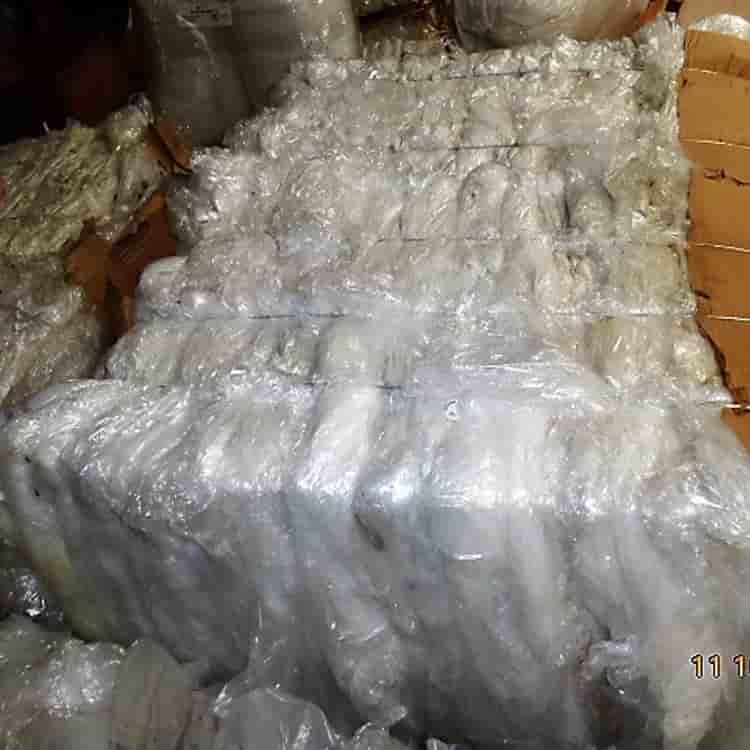
Recycled plastics Polymers battery recycling BRICS Chemical Recycling supply chains
